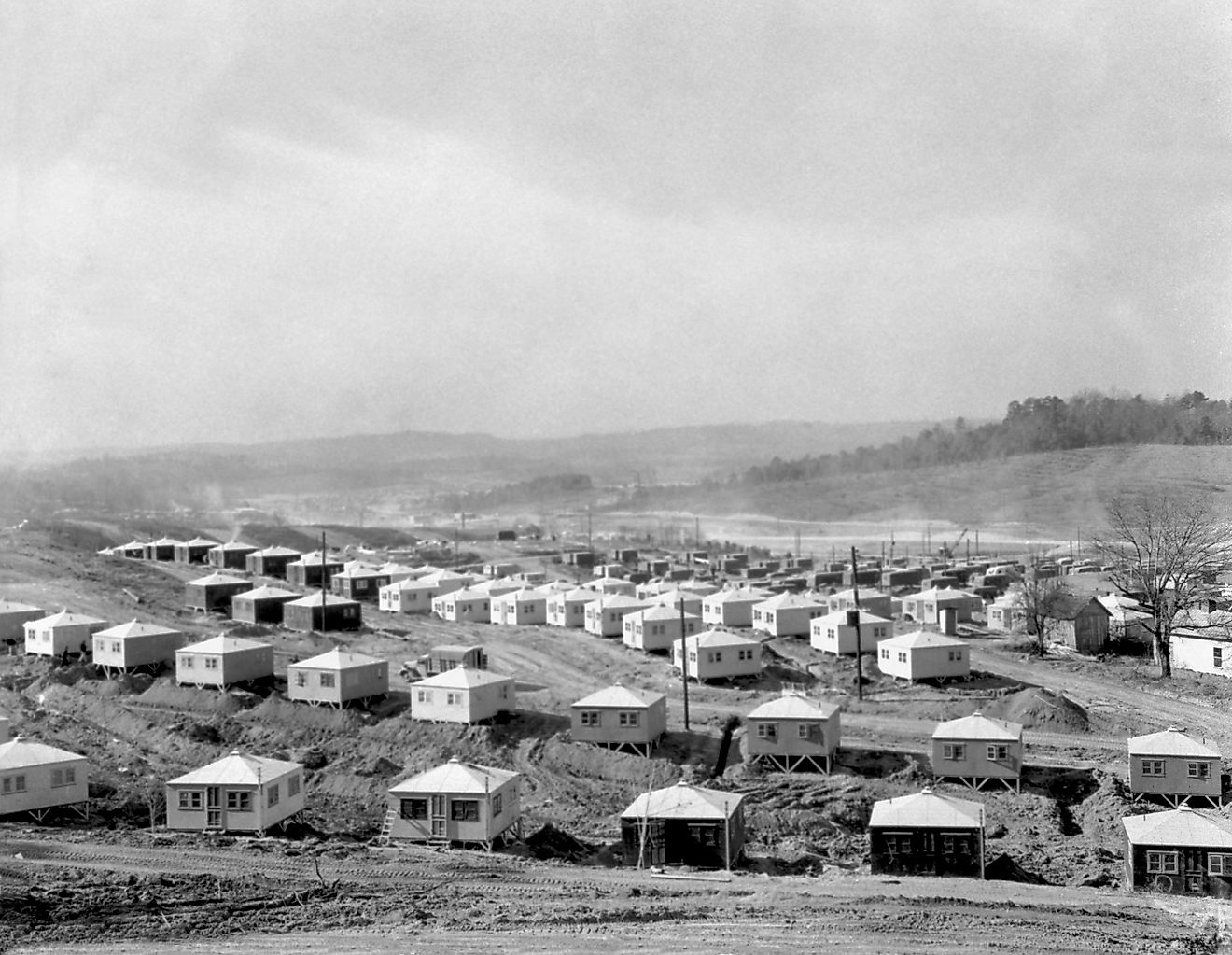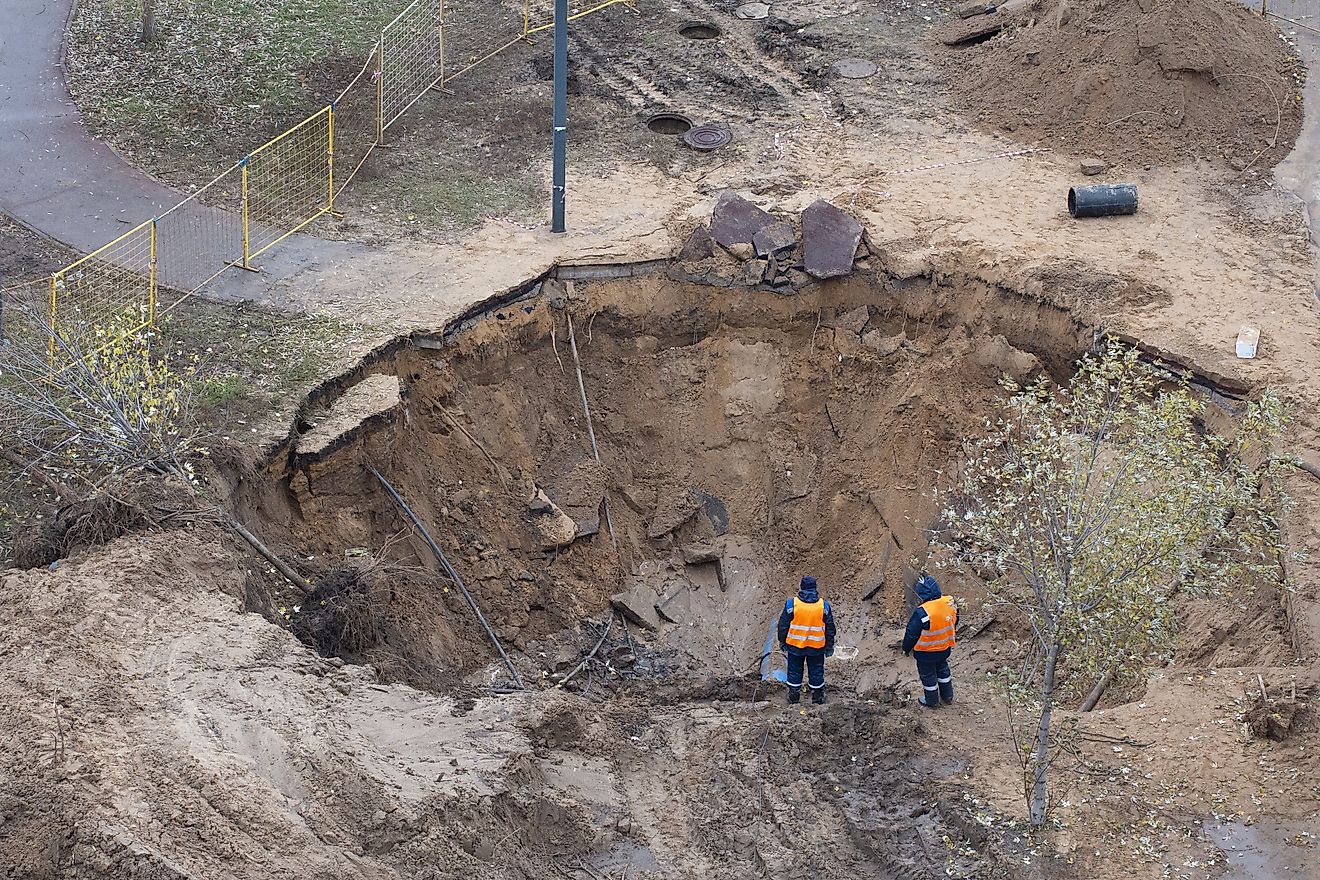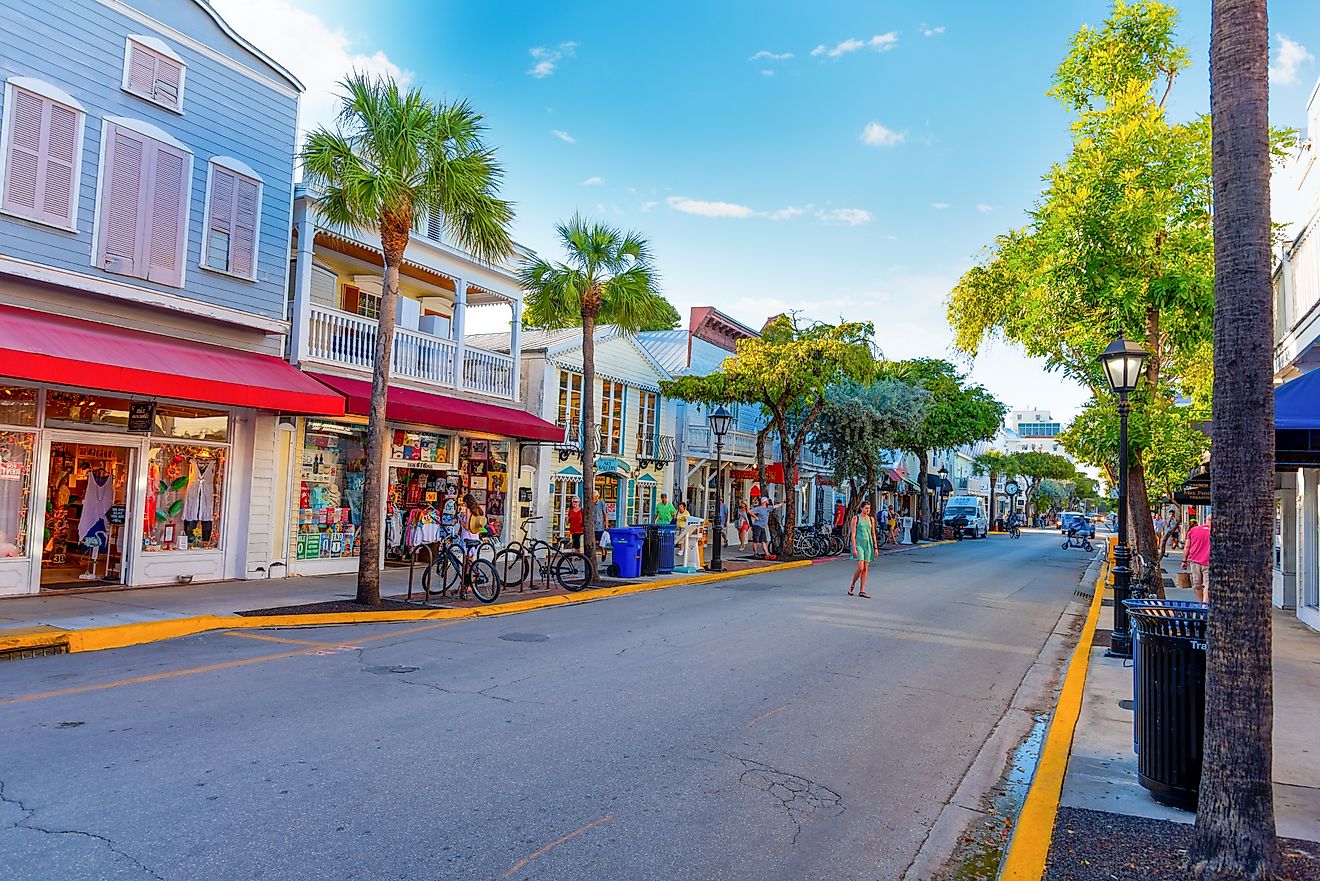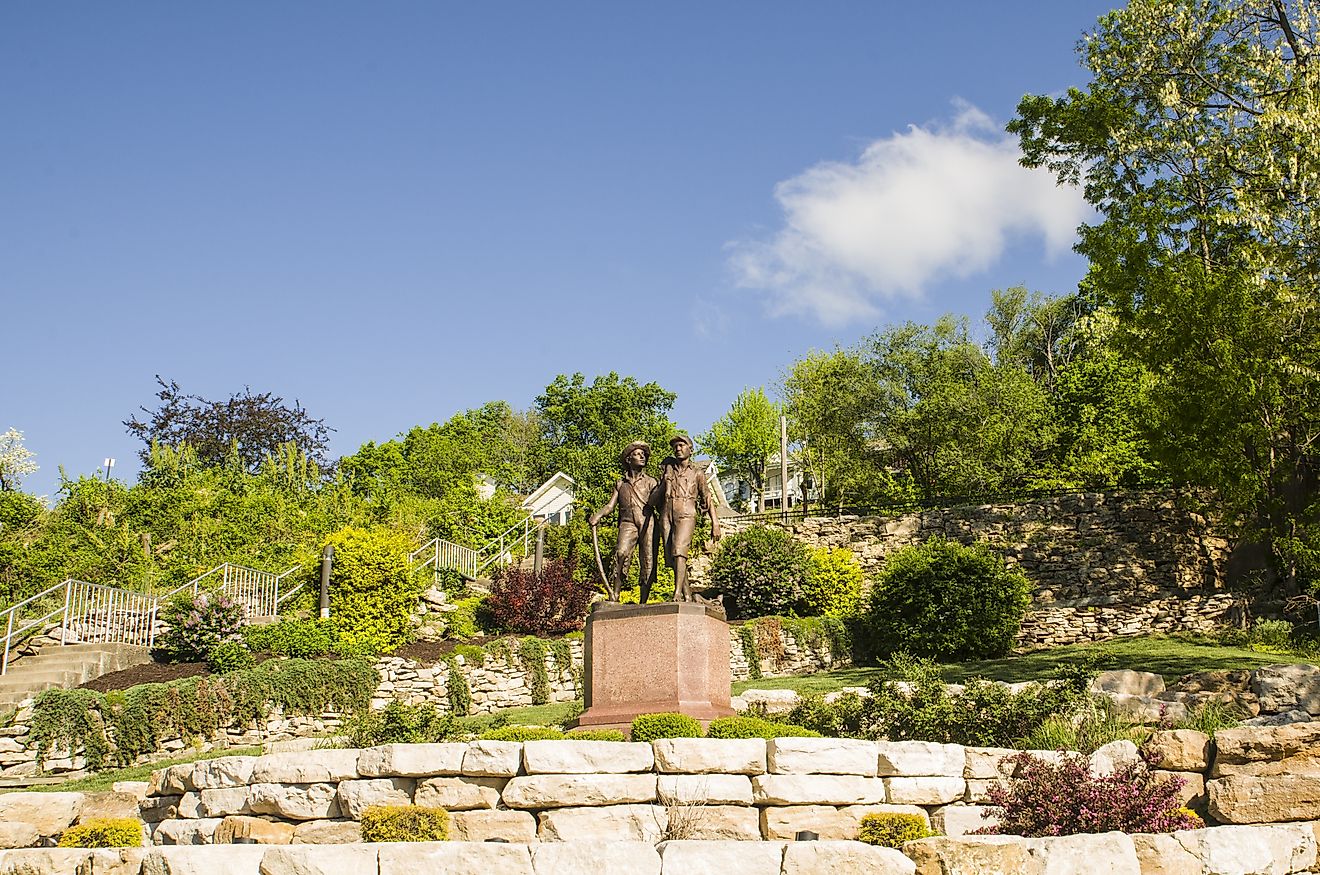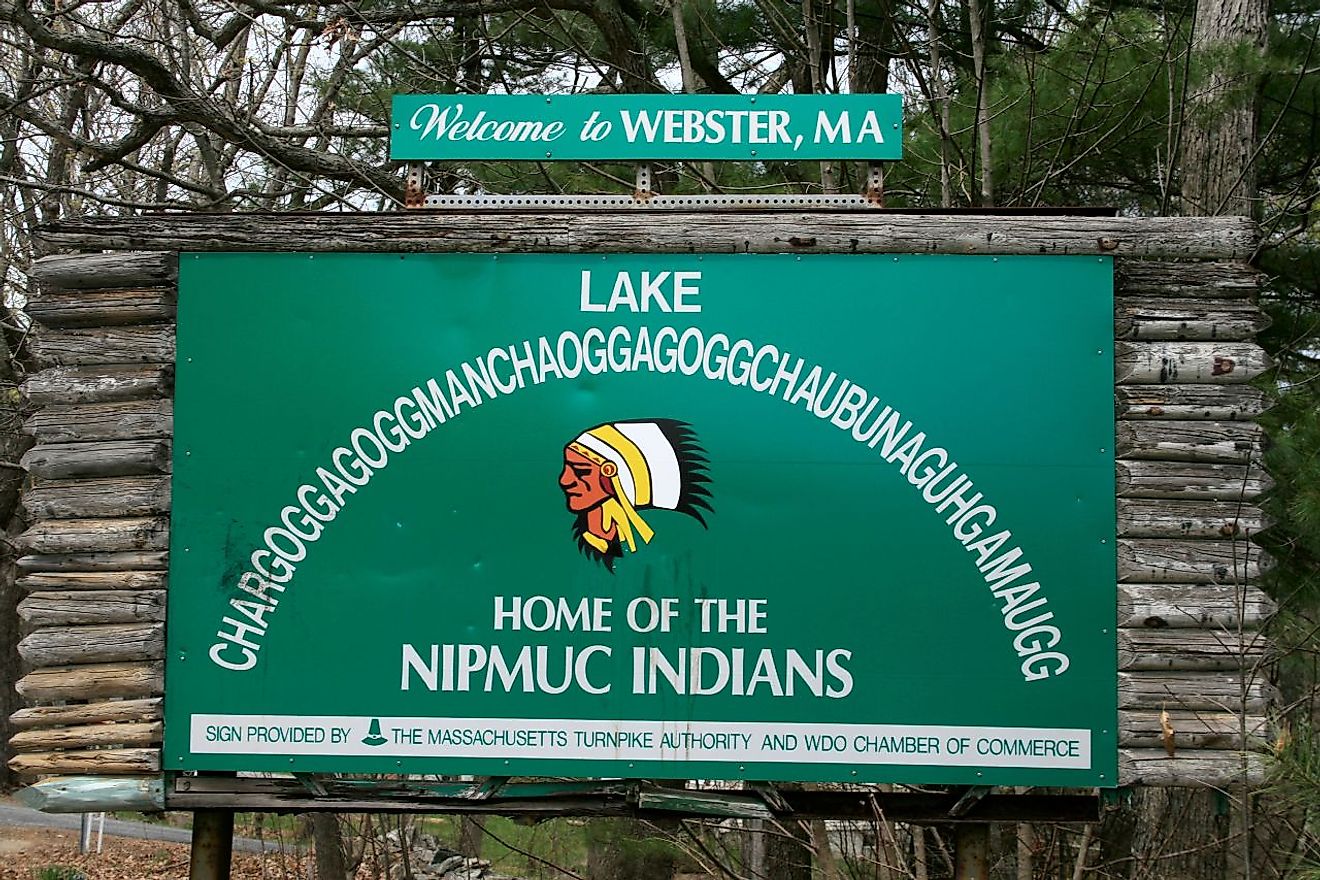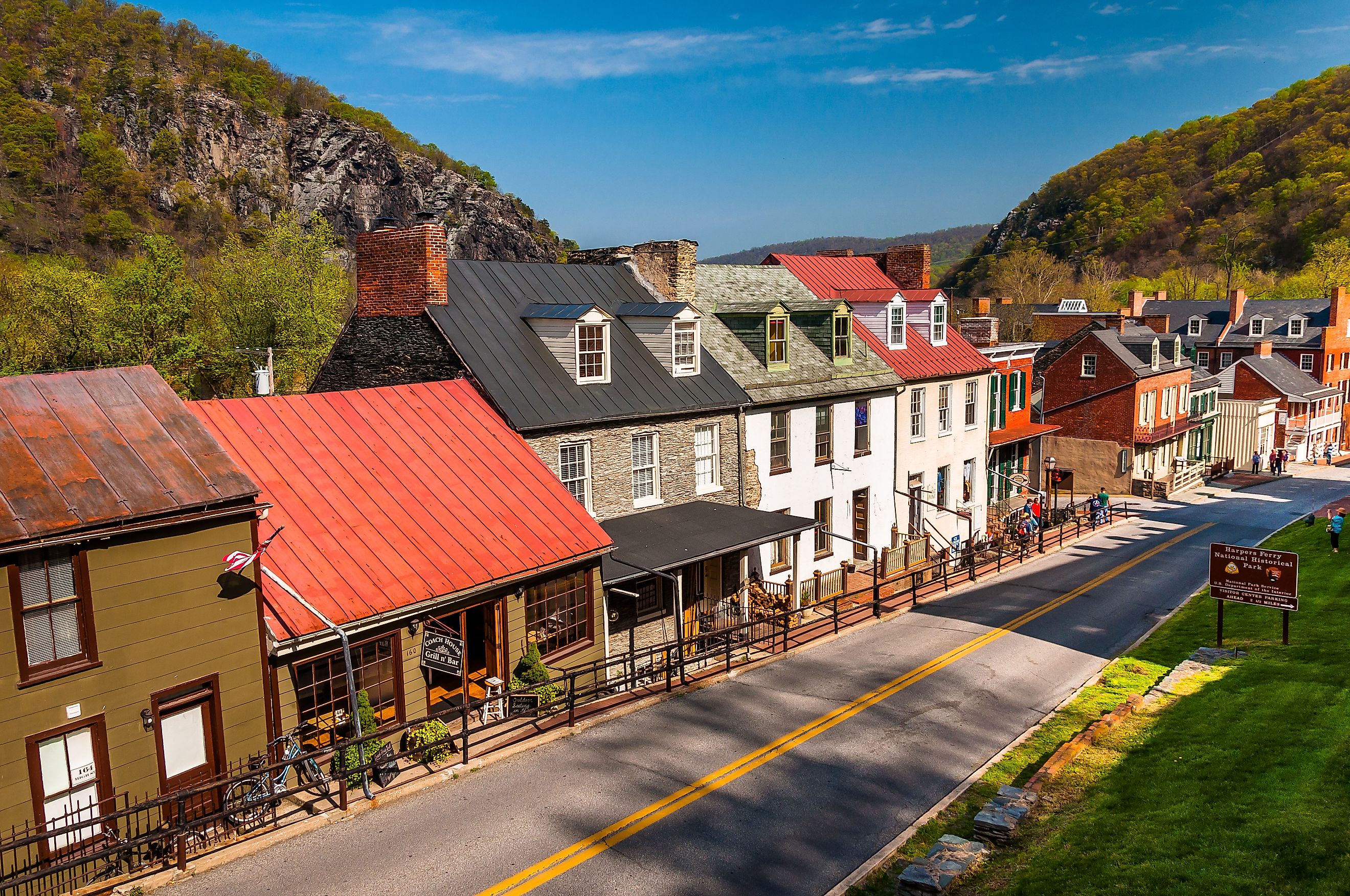
The Oldest Appalachian Towns You Can Still Explore Today
The Appalachian region is a treasure trove of history, filled with towns that have witnessed centuries of change. The rugged mountains, dense forests, and rich cultural heritage that define the Appalachians are mirrored in the ancient towns nestled in its valleys. These towns, many of which have survived wars, economic shifts, and changing times, offer a unique window into America’s past. Today, you can visit some of the oldest Appalachian towns still standing, where each cobbled street and weathered building tells a story of a bygone era.
Let’s take a look at seven of the oldest Appalachian towns that are not just historical landmarks but vibrant places to explore. Each town has its own unique legacy that will transport you to a different time.
Abingdon, Virginia
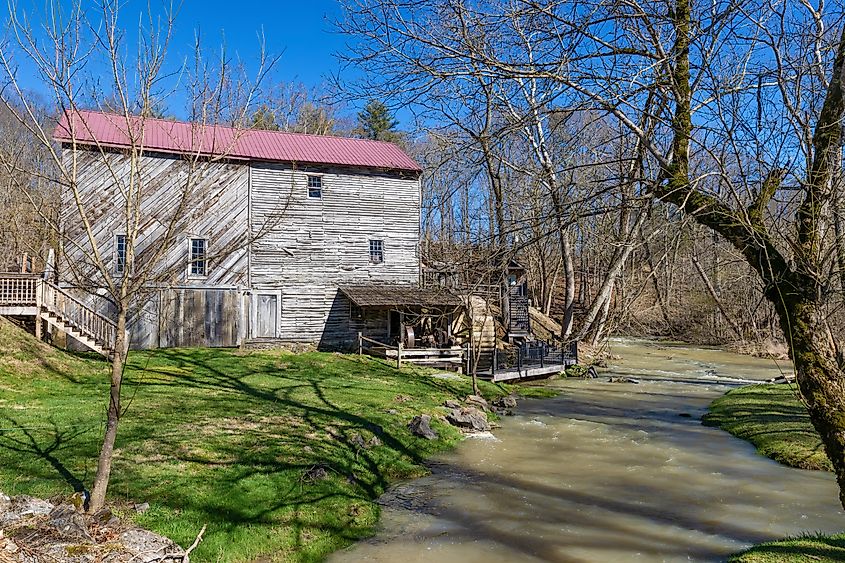
Founded: 1778
Abingdon is a charming town with a rich history, settled just after the American Revolution. Situated in the scenic foothills of the Appalachian Mountains, Abingdon began as a small settlement along the Holston River. Its history is deeply intertwined with the expansion of the American frontier and the evolution of the Virginia wilderness. Early on, Abingdon became an important stop on the Wilderness Road, which led settlers into the western frontier. The road itself passed through this area, making it a pivotal point for migration and trade during the late 18th century.
As the town grew, it played a key role in both the agricultural and industrial development of Southwest Virginia. Abingdon became a thriving hub for local trade, with its strategic location near rivers and trails providing easy access to resources and markets. Over time, the town became known for its role in shaping the economy of the region, and its architecture still reflects this rich heritage.
Today, visitors can explore Abingdon’s preserved historic district, where original brick buildings line the streets. The Barter Theatre, founded in 1933, continues to delight audiences with live performances, earning its place as one of the longest-running professional theatres in the United States. The town’s history as a trade hub, as well as its role during the Civil War, is reflected in its architecture and local museums. One such museum, the Washington County Historical Museum, showcases artifacts from both the Revolutionary War and Civil War periods, further enriching Abingdon’s story as a crossroads of American history.
Must-see spot: The Fields-Penn 1860 House, a preserved antebellum home that offers a glimpse into 19th-century life in the Appalachian Mountains.
Blowing Rock, North Carolina
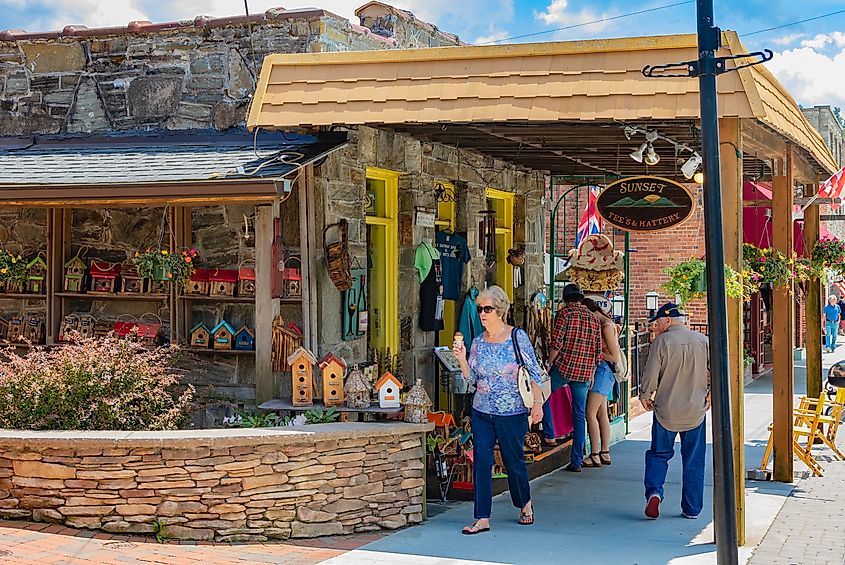
Founded: 1889
Blowing Rock, often described as a “mountain town with a view,” is one of North Carolina’s most scenic spots. This town’s name derives from the natural phenomenon of wind gusts blowing upwards off the Blue Ridge Mountains. Early settlers, including Native Americans, were drawn to the area for its natural beauty and temperate climate. In the late 1800s, Blowing Rock became a popular resort destination for wealthy visitors from across the Southeast.
Today, Blowing Rock offers a blend of outdoor adventure and boutique shopping. Visitors can hike the Appalachian Trail or visit Blowing Rock’s famous cliff, where legend says a Native American girl survived a fall by the wind catching her.
Must-see spot: Explore the Blowing Rock Art & History Museum, where exhibits explore the town’s artistic heritage, or take a walk through the town’s beautiful Memorial Park.
Lewisburg, West Virginia
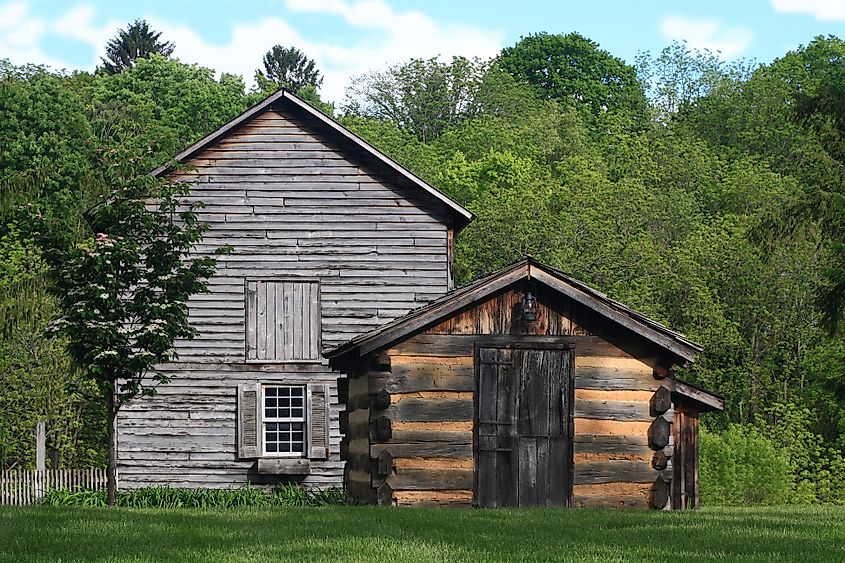
Founded: 1751
One of the oldest towns in West Virginia, Lewisburg sits at the foot of the Allegheny Mountains and has been a key settlement in the region since its founding in the mid-18th century. The town was strategically important during the American Revolution and the Civil War, as it served as a military supply depot. It has maintained much of its historical charm with an abundance of antebellum homes and 19th-century buildings.
Lewisburg’s main street is a delightful collection of local galleries, shops, and restaurants. Its reputation as an arts town has grown over the years, thanks to a lively cultural scene that includes annual events, music festivals, and artisan fairs.
Must-see spot: The Greenbrier Hotel, a historic resort that once housed a secret Cold War-era bunker, still stands as a testament to Lewisburg's historic prominence. Visitors can tour its luxury rooms, indulge in its spa services, or explore the surrounding nature trails.
Lynchburg, Virginia
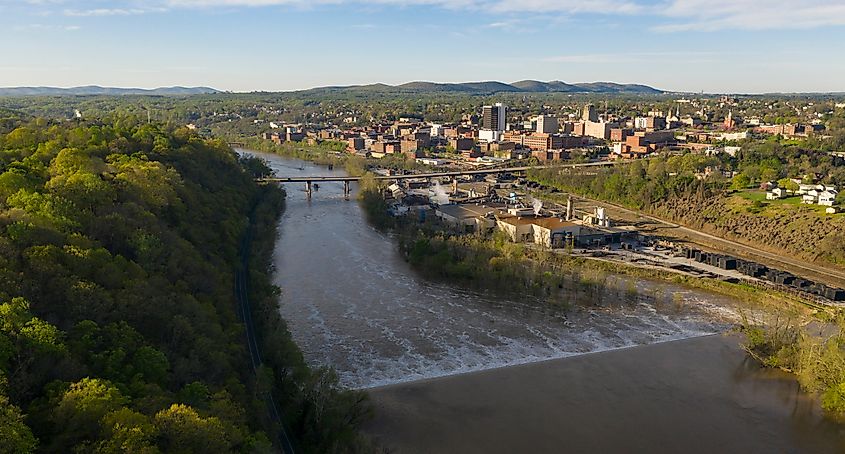
Founded: 1786
Lynchburg, Virginia, was founded at the confluence of the James and Otter rivers and quickly grew into a prominent center for trade and tobacco. By the 19th century, Lynchburg had become one of Virginia’s most industrialized towns, its prosperity fueled by its prime location along the James River and its strong ties to the tobacco industry. Lynchburg’s location also made it an important site during the Civil War.
Today, Lynchburg preserves much of its 18th and 19th-century architecture. Walking through the historic district feels like stepping back in time with its well-maintained streets, buildings, and landmarks. The town is also known for its thriving arts and music scene, and its historic charm is balanced by modern touches.
Must-see spot: Visit Point of Honor, a beautifully restored plantation home that showcases Lynchburg’s early history, or take a stroll down Lynchburg’s Riverwalk, where history and nature collide.
Harper’s Ferry, West Virginia
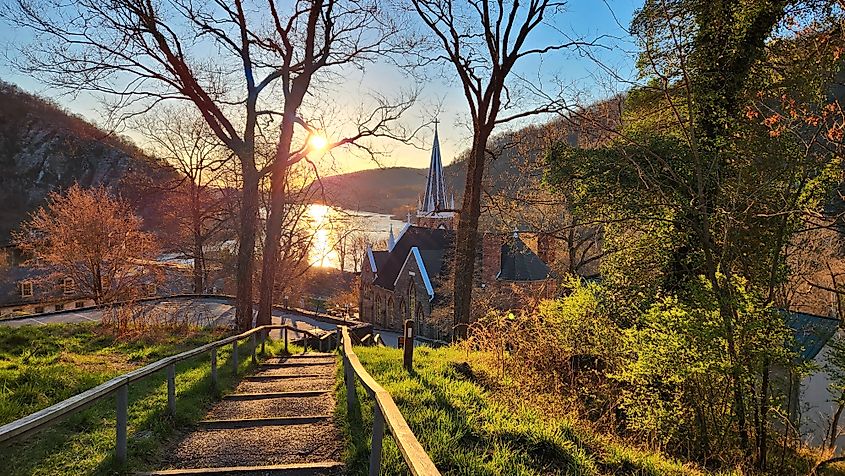
Founded: 1755
Harper’s Ferry holds a pivotal place in American history, as it was the site of John Brown’s raid in 1859, an event that foreshadowed the Civil War. Situated at the confluence of the Potomac and Shenandoah Rivers, the town was once a key transportation and manufacturing hub. Its strategic location made it a focal point for both the Union and Confederate armies during the Civil War, resulting in multiple battles, occupations, and the eventual burning of the town. In fact, much of Harper’s Ferry was destroyed during the war, but the town’s legacy as a symbol of American conflict and change endured.
Today, Harper’s Ferry National Historical Park preserves the town’s history as a key site in the abolitionist movement, as well as its role in the early industrial revolution. The park also highlights the town’s contributions to the nation’s railway system, which was crucial to its early economic growth. With its quaint 19th-century storefronts and streets, Harper’s Ferry feels much like it did in the 1800s, allowing visitors to step back in time and experience a town at the crossroads of pivotal moments in American history.
Must-see spot: John Brown’s Fort, where the abolitionist famously led his raid, is one of the most iconic locations in Harper’s Ferry, and the Appalachian Trail Conservancy headquarters is another must-see for outdoor lovers.
Elizabethton, Tennessee
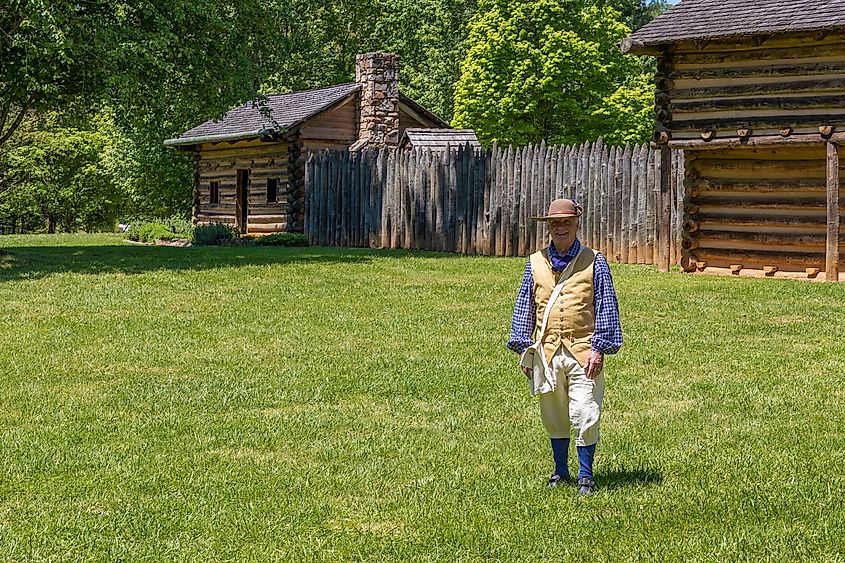
Founded: 1799
Elizabethton was founded at the turn of the 19th century and has witnessed the growth and decline of the frontier in the Appalachian region. Nestled along the Watauga River, this small town played a significant role in the early settlement of Tennessee. Elizabethton is also home to the Watauga Association, which is recognized as the first independent constitutional government in what is now the United States. This early form of self-governance helped pave the way for Tennessee’s statehood.
Today, Elizabethton is a quiet town with historical markers scattered throughout. Its proximity to the Cherokee National Forest makes it an excellent destination for hiking and outdoor exploration.
Must-see spot: Sycamore Shoals State Historic Park, which commemorates the Watauga Settlement and the significant role Elizabethton played in early American history, is a must-visit.
Bristol, Tennessee/Virginia
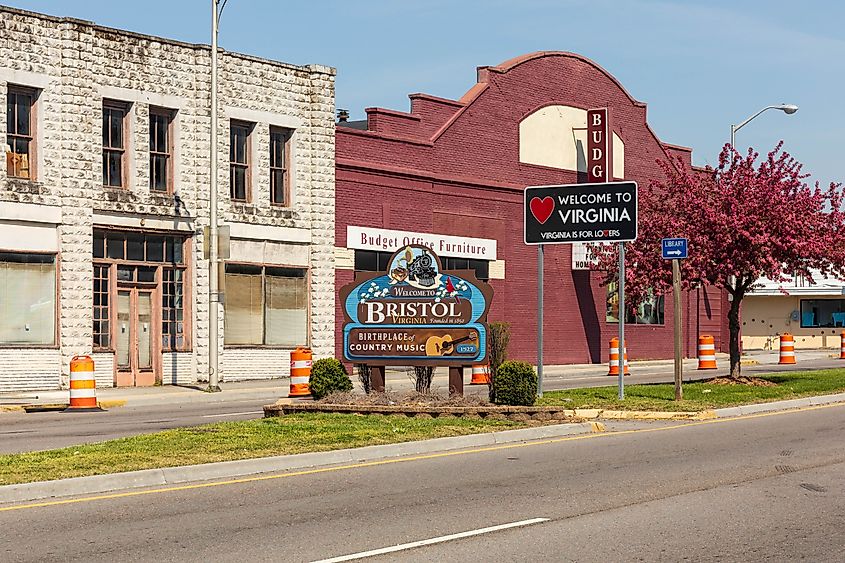
Founded: 1856 (though it traces its origins to earlier settlements)
Bristol is famously known as the “Birthplace of Country Music”, thanks to the historic Bristol Sessions of 1927, which laid the groundwork for the modern country music industry. The town, located on the state line between Tennessee and Virginia, has retained much of its historical character, from its late 19th-century downtown to the musical traditions that continue to thrive.
Though a relatively young town compared to some others on this list, Bristol’s historical significance and cultural contributions make it an essential stop for anyone interested in Appalachian history. Visitors can explore the Birthplace of Country Music Museum and enjoy the annual Bristol Rhythm & Roots Reunion, which celebrates the town’s musical legacy.
Must-see spot: Walk down State Street, the border that separates Tennessee from Virginia, and visit The Birthplace of Country Music Museum, which showcases the town’s musical influence.
A Journey Through Time: Exploring the Oldest Appalachian Towns
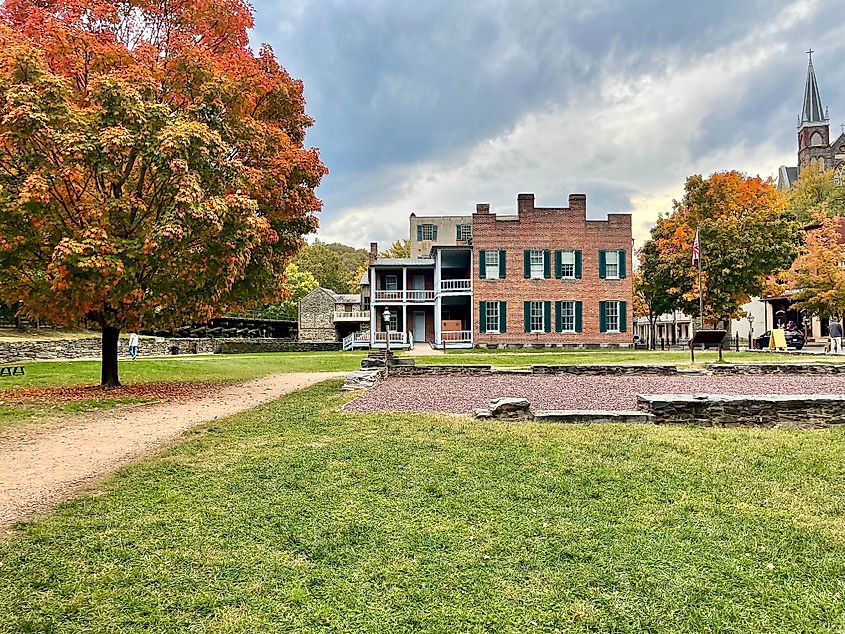
The oldest Appalachian towns not only preserve the region's history but also offer modern visitors a taste of the past. From the first settlements along rivers and trade routes to the towns that grew with the nation, these places stand as living museums where the old world meets the new. Whether you’re exploring cobbled streets, visiting historic homes, or enjoying the vibrant cultural scenes, these towns remind us of the deep, rich heritage that shaped the Appalachian region.
So, next time you venture into the mountains, be sure to visit these historic towns for a journey through time that’s both educational and exhilarating.
